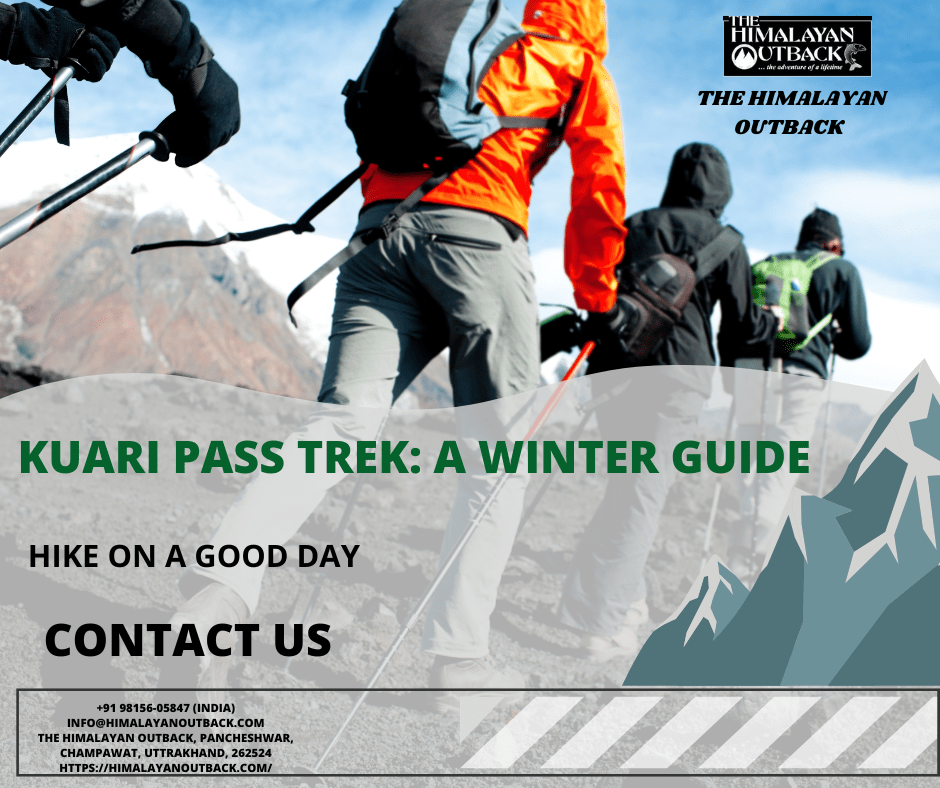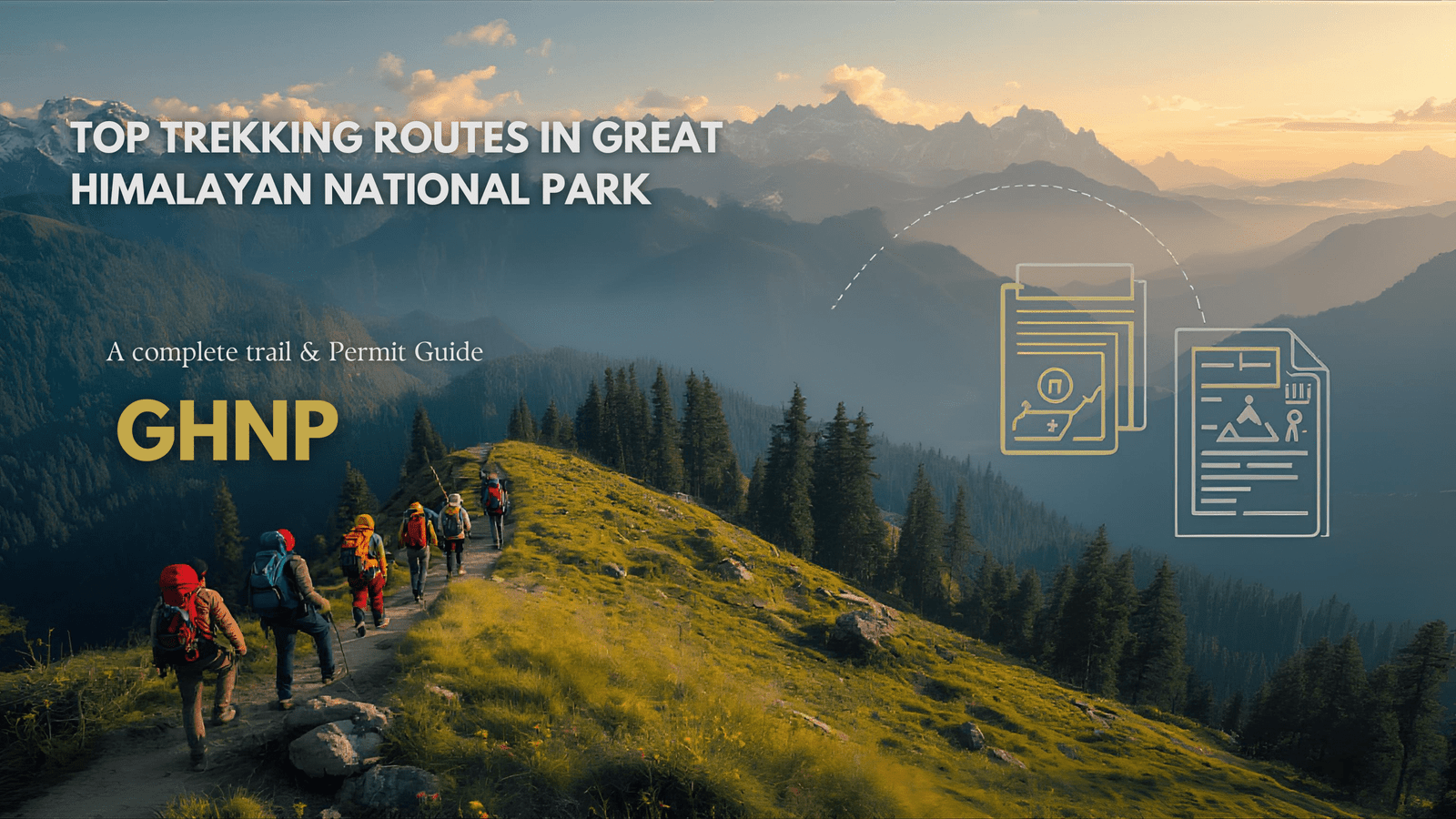The Himalayas call to adventurers with promises of breathtaking vistas and soul-stirring journeys. Among the many jewels in its crown, the Kuari Pass trek in Uttarakhand stands out as a truly spectacular experience, especially during the winter months. Offering panoramic views of some of the highest peaks in the Indian Himalayas, this trek is a must-do for both novice and seasoned trekkers.
This guide will walk you through everything you need to know to conquer the Kuari Pass trek in Uttarakhand. We’ll cover what makes this trail so special, how to prepare for the journey, and essential safety tips to ensure your winter adventure is both memorable and safe.
Why Choose the Kuari Pass Trek?
The Kuari Pass, which translates to “doorway,” sits at an altitude of 12,800 feet in the Garhwal region. The trek is famous for its stunning, wide-angle views of Himalayan giants. As you traverse the trail, you are rewarded with an incredible arc of snow-covered peaks, including Nanda Devi, Kamet, Dronagiri, Trishul, and Chaukhamba. The sheer scale of the landscape is humbling and offers unparalleled photographic opportunities.
What makes the Kuari Pass trek in Uttarakhand particularly appealing is its moderate difficulty. It strikes a perfect balance, providing a genuine challenge without requiring advanced mountaineering skills. This makes it an accessible entry point for those new to Himalayan trekking while still offering a rewarding experience for veterans. The trail winds through ancient forests of oak and rhododendron, opens into vast meadows (bugyals), and leads you through charming remote villages, offering a rich tapestry of nature and culture.
Planning Your Winter Adventure
Embarking on the Kuari Pass trek during winter requires careful planning. The landscape transforms into a magical snow-covered wonderland, but the cold weather and snow add a layer of complexity to the journey.
Best Time for a Winter Trek
The ideal window for a winter trek to Kuari Pass is from December to February. During this period, the trails are draped in a thick blanket of pristine snow, creating a surreal and beautiful environment. The air is crisp and clear, often providing the sharpest views of the distant peaks. Be prepared for temperatures to drop significantly, especially at night, often falling well below freezing.
Essential Gear and Clothing
Proper gear is non-negotiable for a safe and comfortable winter trek. Your packing list should prioritize warmth, waterproofing, and comfort.
- Layering is Key: Dress in multiple layers to easily adjust to changing temperatures. Start with a moisture-wicking thermal base layer, add a fleece or down mid-layer for insulation, and top it with a waterproof and windproof outer shell (jacket and pants).
- Footwear: Invest in a pair of sturdy, waterproof trekking boots with good ankle support and grip. Pair them with woolen socks to keep your feet warm and dry.
- Head and Hands: A warm beanie, balaclava, or woolen cap is crucial to prevent heat loss from your head. Waterproof and insulated gloves are equally important to protect your hands from the biting cold.
- Trekking Equipment: You will need a comfortable backpack (40-50 liters), trekking poles for stability on snow and ice, and microspikes or crampons for better traction on slippery sections. A headlamp with extra batteries is also essential.
- Sun Protection: The sun can be surprisingly strong at high altitudes, especially when reflected off the snow. Pack high-SPF sunscreen, sunglasses with UV protection, and a lip balm.
Essential Safety Tips for the Kuari Pass Trek
Safety should always be your top priority. Winter conditions in the Himalayas can be unpredictable, so being well-prepared can make all the difference.
Acclimatize Properly
Altitude sickness is a serious risk that can affect anyone, regardless of fitness level. The key to prevention is proper acclimatization. Ascend gradually, stay hydrated by drinking plenty of water, and avoid alcohol. Pay close attention to your body and communicate any symptoms like headaches, dizziness, or nausea to your guide immediately. Itineraries for the Kuari Pass trek in Uttarakhand are typically designed to allow for slow ascent and adequate rest.
Trek with a Reputable Guide
Never attempt a winter trek alone. Always go with an experienced and certified guide or a reputable trekking company. A good guide knows the terrain, weather patterns, and emergency procedures. They are equipped to handle unforeseen challenges and ensure your group’s safety. Their local knowledge also adds immense value to the trekking experience, offering insights into the flora, fauna, and local culture.
Stay Hydrated and Nourished
Your body works harder in cold weather and at high altitudes, so it’s vital to stay fueled. Drink at least 3-4 liters of water daily to stay hydrated. Eat regular, high-carbohydrate meals to maintain your energy levels. Hot beverages like soup, tea, and hot chocolate are great for keeping warm and boosting morale.
Understand the Weather
Winter weather in the Himalayas can change rapidly. Check the forecast before you start each day’s trek and listen to your guide’s advice. Be prepared for sudden snowfall, high winds, and reduced visibility. If conditions become unsafe, your guide may need to alter the itinerary or turn back. Flexibility and a positive attitude are crucial.
A Typical Itinerary for the Kuari Pass Trek
While itineraries can vary, a typical trek to Kuari Pass spans about 6-7 days, starting from a base like Joshimath. A sample route might look like this:
- Day 1-2: Arrive in Haridwar/Rishikesh and drive to Joshimath, allowing for acclimatization.
- Day 3: Drive to the trek starting point (like Dhak village) and trek to a campsite like Gulling Top.
- Day 4: Trek from Gulling Top to Tali Forest Camp, passing through beautiful forests.
- Day 5: Trek to Kuari Pass and return to Tali. This is the summit day, offering the trek’s most rewarding views.
- Day 6: Descend from Tali to Dhak village and drive back to Joshimath.
- Day 7: Drive back to Haridwar/Rishikesh, concluding the journey.
Embrace Your Himalayan Journey
The Kuari Pass trek in Uttarakhand is more than just a walk in the mountains; it’s an opportunity to connect with nature, challenge yourself, and witness some of the most majestic landscapes on Earth. With the right preparation and a focus on safety, your winter trek to Kuari Pass will be an unforgettable adventure. Pack your bags, respect the mountains, and get ready to create memories that will last a lifetime.






